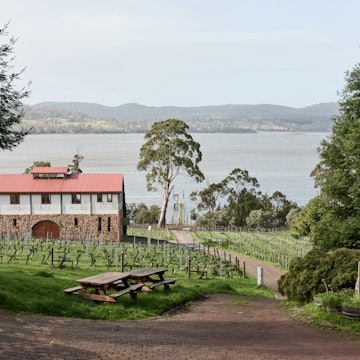

Snorkeling in Roatán, Honduras. Antonio Busiello/Getty Images
You don’t have to be a certified diver to come face-to-face with some of the sea's most fascinating creatures. In fact, in some destinations, you can simply wade from the sand into the shallows with your mask and snorkel and enjoy some incredible marine life encounters.
From gazing upon colorful cichlids in Malawi to wading out to spy rare aquatic mammals near protected reefs in Egypt, here is our guide to the very best places in the world to snorkel.

1. Lady Elliot Island, Australia's Great Barrier Reef
Best for coral and manta rays
The Great Barrier Reef's southernmost coral cay, Lady Elliot Island offers some of the best snorkeling in Australia and is known for its manta rays, nesting sea turtles, and eco-credentials.
Explore a seabed of coral gardens and abundant marine life, including giant manta rays, barracudas and leopard sharks. The shallow lagoon fringing the eastern side of the island is best for families and beginners, while the coral gardens on the western side have deeper waters ideal for the more seasoned snorkeler.
Sitting in one of the Great Barrier Reef's "Green Zones," a "no-take" area where destructive behavior is prohibited, Lady Elliot Island enjoys the highest level of environmental protection. That's one of the reasons the humpback whales that migrate through these waters between June and October keep returning.

2. Fernando de Noronha, Brazil,
Best for warm waters with great visibility
A volcanic archipelago off Brazil's northeast coast, Fernando de Noronha is a fiercely protected eco-wonderland, favored by naturalists and marine biologists, with a rugged coastline and diverse ecosystems.
It's renowned for its undeveloped beaches and unparalleled snorkeling. With visibility reaching up to 40m (131ft) in its warm, emerald waters, you can spot sea turtles, rays, lemon and reef sharks. The beach also has the highest concentration of resident spinning dolphins in the world.
At Baía do Sancho, considered by many to be the most beautiful beach in Brazil, the sandy seafloor allows boats to stop without damaging the coral. Other good snorkeling points include Baía dos Porcos, Sueste, Morro de Fora, and Porto, with its accessible shipwrecks teeming with marine life.

3. Thumbi, Malawi
Best for colorful fish
The lazy and lovely village of Cape Maclear is one of Malawi’s most laid-back and scenic spots. You may find it hard to prise yourself off the golden sands at the edge of Lake Malawi to do anything, but a boat trip across to the pyramidal wooded island of Thumbi is well worth the effort.
Head over with a local boat captain and ease yourself into the balmy lake waters with your mask and snorkel. A swim around the rocks at Thumbi quickly reveals the cichlid fish for which the lake is famous.
More than 850 cichlid species are supported by this glorious and vast freshwater lake, and while the fish themselves may not offer the wow factor and visual diversity that you get on a coral reef adventure, their colors dazzle. Watching these amber yellow, fuchsia pink, orange, indigo and turquoise creatures dart around you as you dip is a rare delight.
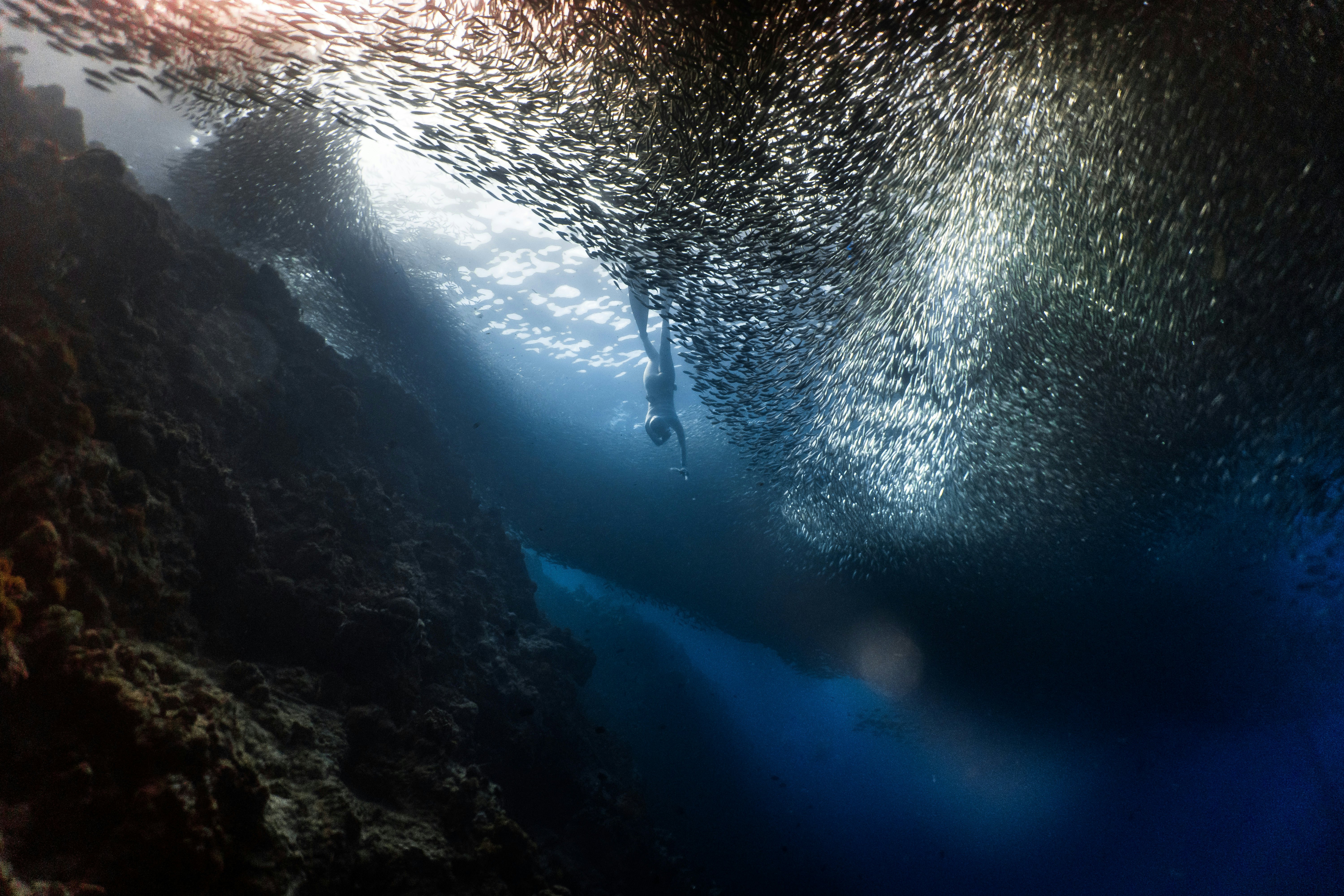
4. Cebu, the Philippines
Best for snorkeling with sardines
Home to more than 7000 islands, the Philippines boasts bountiful snorkeling sites. The Cebu region in particular is synonymous with marine life and aquatic activities – from swimming with polka-dotted whale sharks to exploring enigmatic wrecks. Nestled in Cebu Island’s western shores, Moalboal is home to an almost year-round sardine run.
Snorkeling in this paradisiacal haven is ideal for those seeking underwater adventure at a leisurely pace. There’s no need to get on a boat or strap on a tank to discover Moalboal’s underwater sanctuary. Panagsama Beach’s reef is easily accessible due to the sea’s calm waters and its proximity to the shoreline. Simply wade into the crystal waters from a blindingly white stretch of sand, dip your head under the surface and find yourself among seemingly infinite masses of sparkling sardines.
Forego expectations of scaly fish packed tightly into a tin. Instead, picture glimmering figures swirling in synchronized, undulating formations against a deep-blue backdrop, the sunlight glinting on their silvery scales. It’s a magically mindful experience.
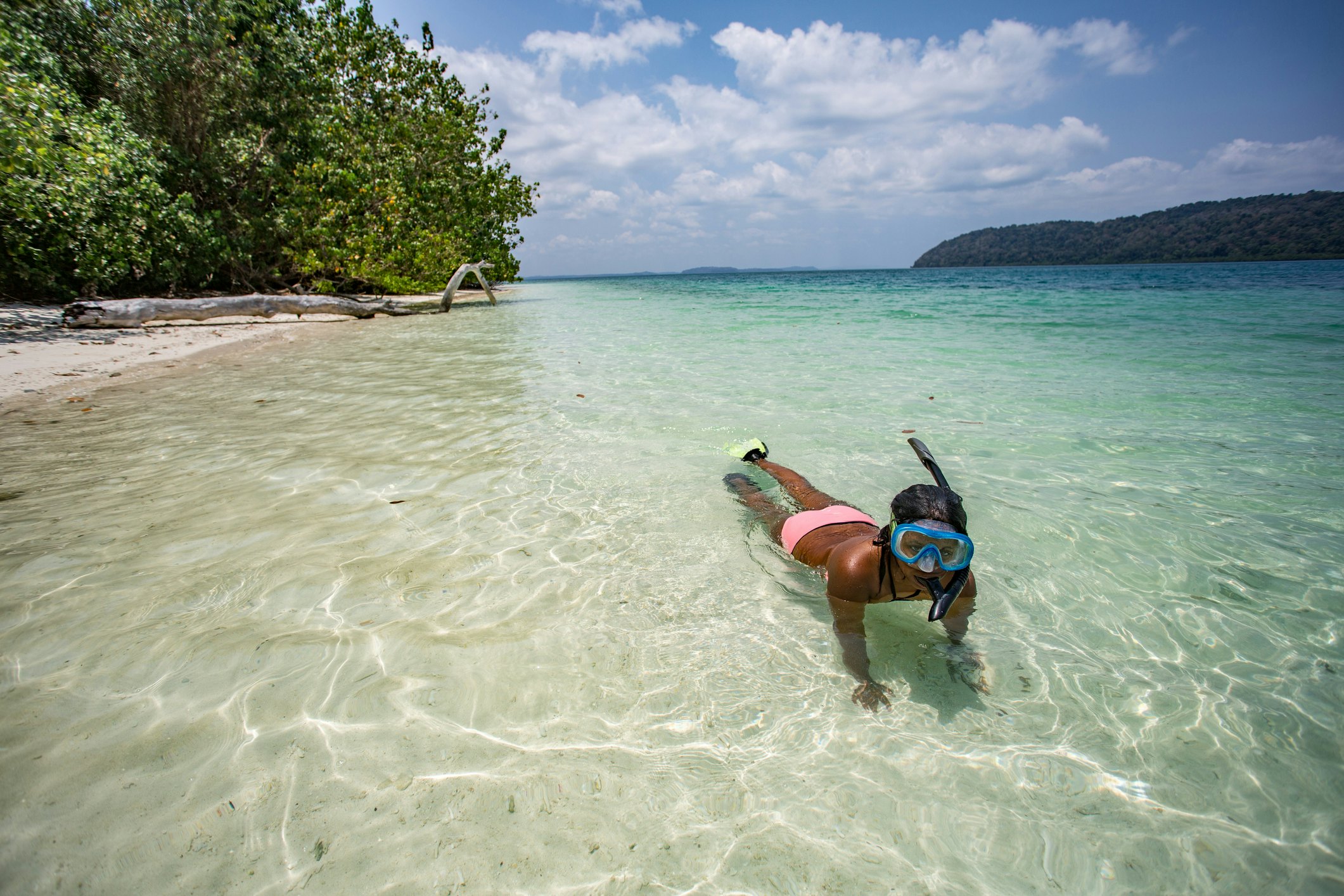
5. Radhanagar, Andaman Islands
Best for crystal-clear waters
Clinging to the northwest coast of seductive jungle-wreathed Havelock Island (the most developed of India's far-flung Andaman Islands), showstopping Radhanagar is undeniably one of Asia’s most exquisite beaches. Gaze out on this glorious white-gold stretch of silken sand washed by turquoise waves and bordered by tangles of near-impenetrable primeval tropical forest.
Havelock tempts travelers with its terrific diving and outstanding local dive schools, but you can also get a taste of the island’s underwater riches with just a leisurely spot of snorkeling off Radhanagar. The glass-clear waters are famous for their dazzling rainbows of fish, and you might even spot a shark, turtle or manta ray. Otherwise, there’s little to do here apart from stroll the beach’s vast expanses and kick back on the sand as the sun sinks into the Andaman Sea – and that, of course, is what it’s all about.
Crocodiles are a serious danger in the Andaman Islands, and there have been several fatal attacks on people in recent years. Make sure you’re up to date on the latest safety information, follow any official local warnings and keep out of the water at dusk and dawn.
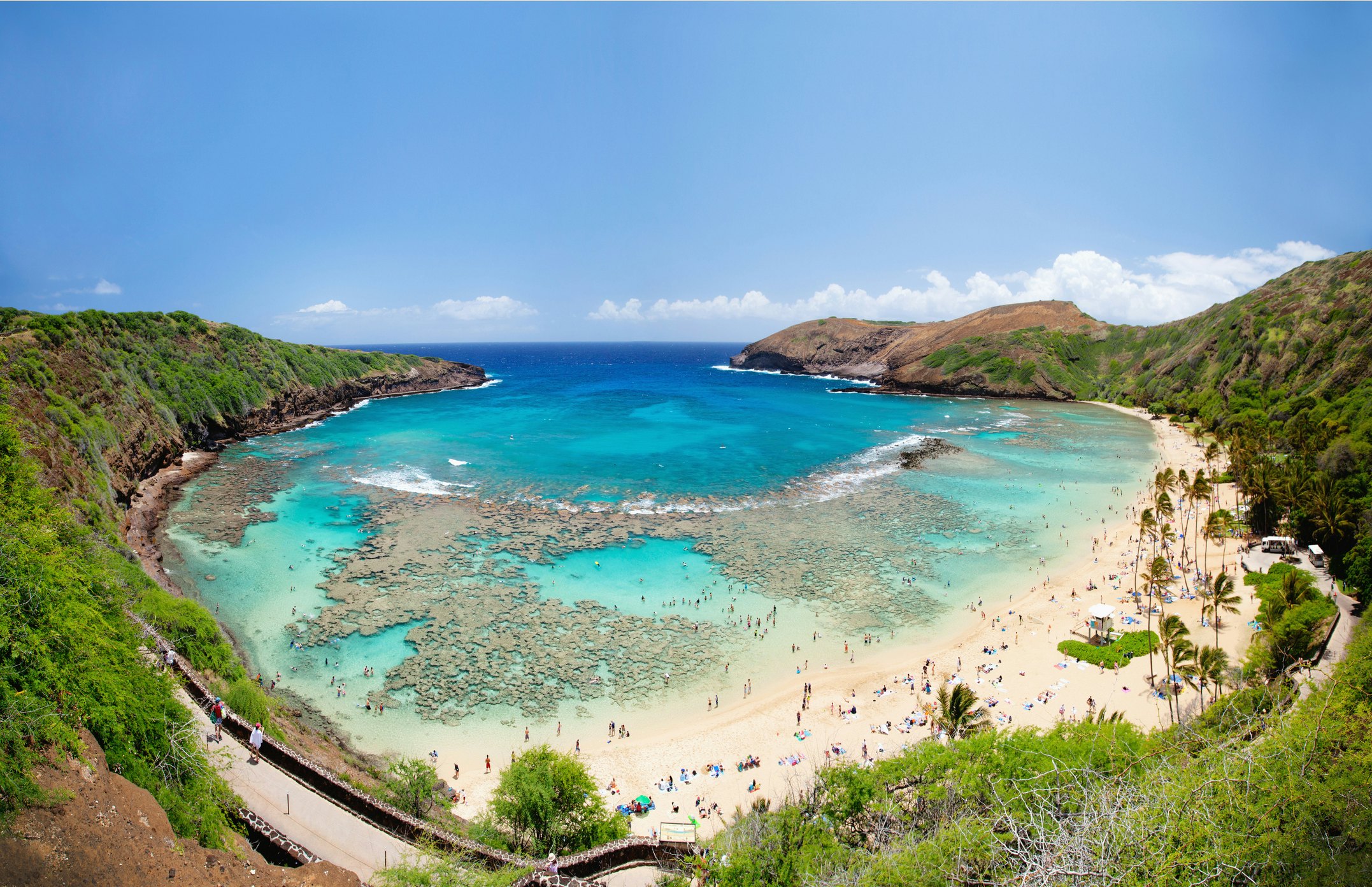
6. Hanauma Bay, Hawaii
Best for snorkeling on an ancient coral reef
Nestled in an ancient volcano crater, backed by palm trees and home to a 7000-year-old coral reef, Hanauma Bay is one of the most scenic and popular snorkeling spots in Hawaii.
Don your snorkeling gear and wade right into the calm, shallow waters: hundreds of neon-colored species of fish, corals, eels and sea turtles await not far from the dreamy white-sand beach. Beyond the reef, you can also explore crevices and caves teeming with yet more sea life.
The bay is part of a nature preserve and marine-life conservation area. It’s closed on Mondays and Tuesdays to minimize the impact on the ecosystem, and a maximum of 1400 visitors are allowed on any given day. Visitors must reserve their time slot in advance, pay a fee ($25 + $3 for parking) and watch a 9-minute-long orientation video before heading out into the water.
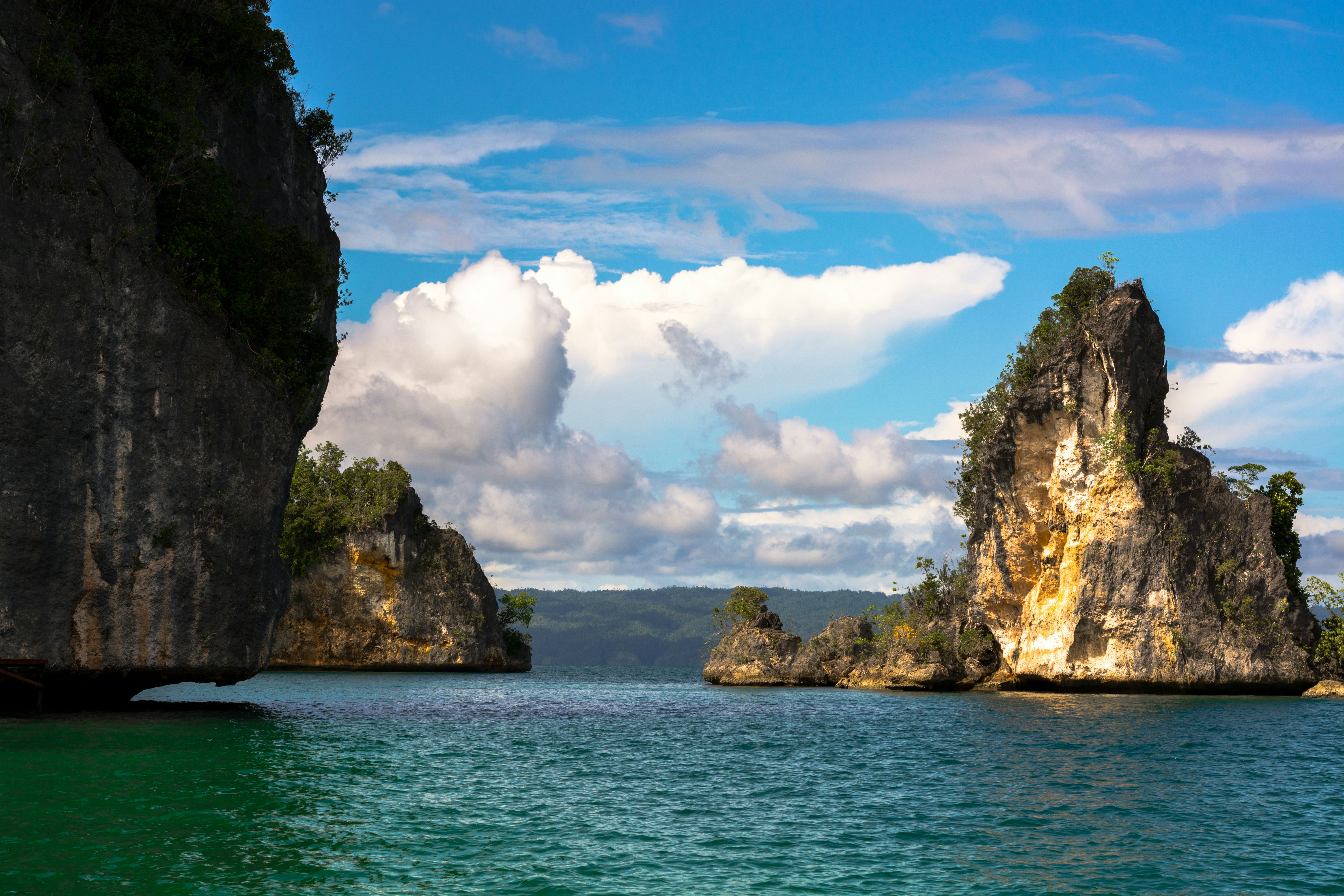
7. Raja Ampat Islands, Indonesia
Best for diverse marine life and reefs
Southeast Asia abounds with spectacular diving and snorkeling spots, and Indonesia’s Raja Ampat arguably tops the all-star list, with its fine white-sand beaches, hidden lagoons and impressive diversity of marine life and coral reef systems.
The quantity and variety of marine life here is so astounding, in fact, that scientists have described Raja Ampat as a biological hot spot. They believe its reef systems restock reefs throughout the South Pacific and Indian Oceans.
Armed with your mask, snorkel and fins, you’ll have free rein to explore Raja Ampat’s blue-water mangroves and a marine area that boasts over a thousand species of reef fish, hundreds of species of coral, several types of sea turtles and majestic manta rays.

8. Tofo Beach, Mozambique
Best for snorkeling with whale sharks
The southeast African country of Mozambique offers plenty of superb snorkeling spots along its pristine Indian Ocean coastline. Here, warm turquoise waters, which lap dune-fringed beaches, abound with shoals of colorful fish and well-preserved corals.
The waters off Tofo Beach, in the southern province of Inhambane, are particularly rich in marine biodiversity and most famous for their large whale shark population. It’s one of the few places on the planet where gentle whale sharks can be found year-round.
Manta rays also grace these waters, along with sea turtles and dolphins. Add in the fact that humpback whales stop by between June and October, and you’ll be popping Mozambique right to the top of your snorkel bucket list.
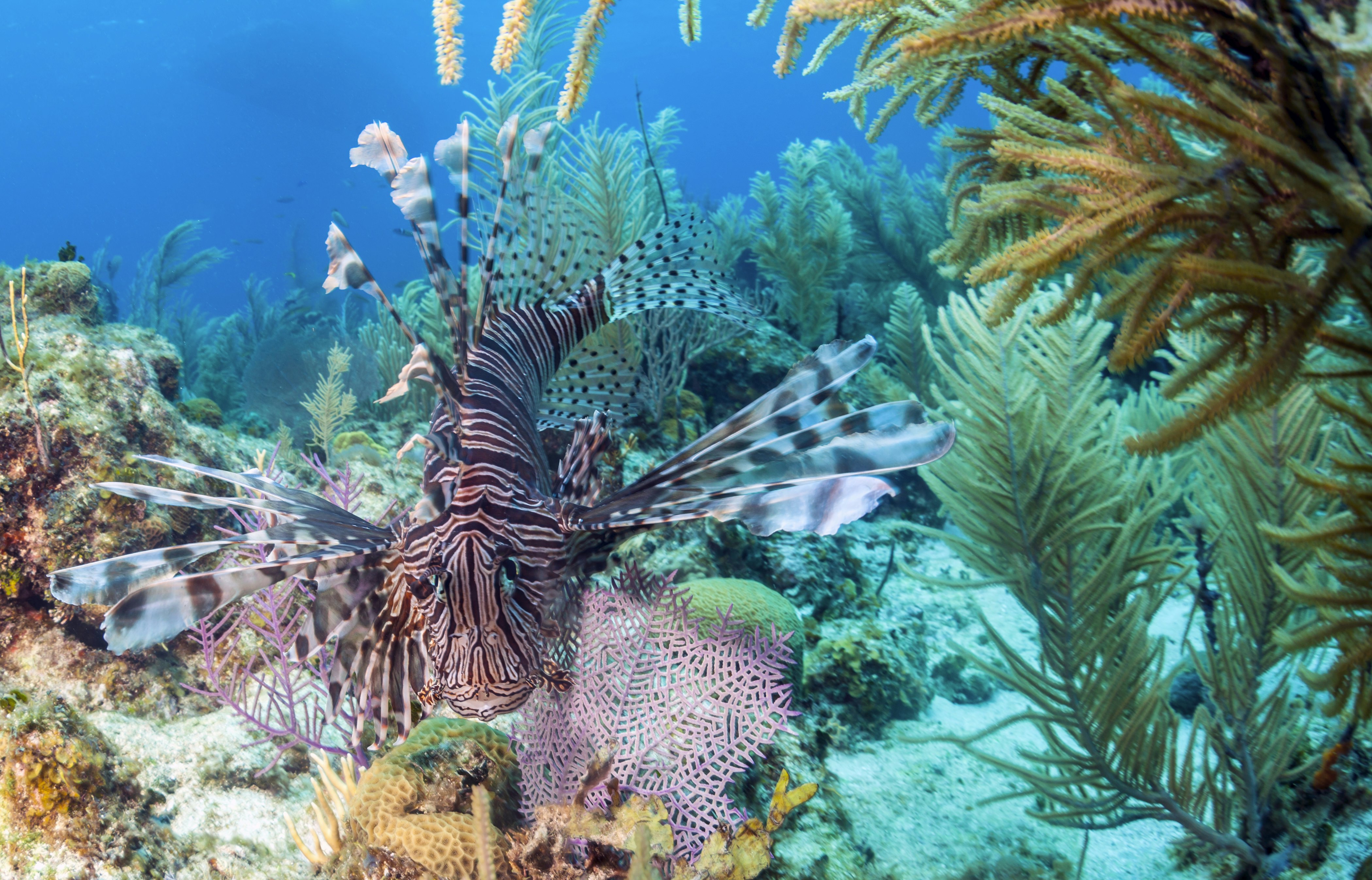
9. Roatán Island, Honduras
Best snorkeling in the Caribbean
Roatán is the largest and most developed of the Honduran Bay Islands, and one of the best places to snorkel in the Caribbean. Fringed by an incredibly diverse coral reef rich in tropical fish, the island is a diving and snorkeling paradise.
Head to the pristine white-sand beach of West Bay to spot parrotfish, butterflyfish and angelfish just off the shore, or venture south to Mary’s Place, a diving site that revolves around a huge crevice where sea turtles, eagle rays and groupers often come up to the surface.

10. Abu Dabbab Bay, Marsa Alam, Egypt
Best for snorkeling with dugongs
Marsa Alam in southern Egypt is one of the few places in the world to spot the elusive dugong, a rare, lesser-known cousin of the manatee that’s long inspired mermaid myths and legends across cultures.
In Abu Dabbab, the shallow waters, protective reefs and abundant seagrass attract and sustain a small population of dugongs – affectionately dubbed "sea cows" because of their grass-eating habits.
Other residents of the bay that can be found around the well-preserved coral reefs include giant sea turtles, parrotfish, angelfish, barracudas and seahorses, while the sandy seafloor is also home to stingrays.
Some golden rules for responsible snorkeling
Never touch corals or sea creatures. Check where you put your feet – do not stand on corals.
Show respect to marine life and keep your distance at all times.
Avoid crowds – no turtle wants to be surrounded by a group of leering humans; the snorkeler who swims away from the crowd is the snorkeler who sees things no one else in the group does.
Choose reef-friendly sunscreen (which can sometimes be trickier than it sounds) or, more simply, wear rash vests or skinsuits to avoid sunburn.
Pick responsible and ethical boat operators when embarking on snorkeling tours.
Avoid using plastic when you travel, as much as possible.
Consider volunteering for local beach cleans to help keep reefs healthy.
Be safe, watch for currents, and if you’re not a strong swimmer, don’t venture out of your depth.












